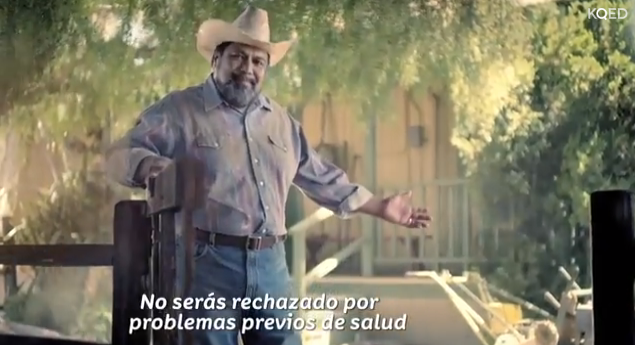Ramirez says another problem is that all the early TV ads end with a web address for Covered California -- no phone number or physical address. She says that completely misses how Hispanics like to shop, especially for a complicated product like health insurance.
"Hispanics are heavily on the Internet, and they’re growing very fast on the Internet; however they’re not transacting on the Internet," Ramirez notes. "They transact on a personal basis. Hispanics will wait to go to a 7-11 until 11 o’clock. Because at 11 o’clock they know that Juan is on duty."
Ignoring Cultural Relevance
Perhaps Covered California’s biggest mistake was simply translating ads developed in English for a general audience into Spanish. This ignores the importance of cultural relevance. Think of the award-winning English-language campaign, Got Milk? At worst, a literal translation into Spanish could be a rude reference to breast milk. At best, it just falls flat. That’s what happened with Covered California’s first Spanish-language ad.
The ad features a series of people looking directly into the camera saying, in Spanish, "Welcome to a new state of health. Welcome to Covered California."
Ad experts say that was an obvious misstep.
"To say we’re in a new state of health for California, it’s grammatically correct to translate it literally, but it doesn’t have the same nuance or cuteness that it does in English," says Roberto Orci, CEO of Acento Advertising in Santa Monica.
He found one of the state’s follow-up ads just boring -- the music, the message and the man in the ad.
"This guy was stiff as a board and … seco, which in English means dry," he said. "He doesn't care about my health insurance needs at all.
Latinos Are Key to Health Insurance Risk Pool
If the product is chicken nuggets or milk, it might not matter to anyone but the companies if Latinos buy it. But, if Latinos don’t buy health insurance, it matters to everyone.
It all has to do with the insurance risk pool.On average, Latinos are younger and healthier than the general population. The premiums they pay help cover the health care costs of older, sicker Californians. And that keeps premium costs down for everyone else.
That’s why Covered California is sweating the numbers. Just 6 percent of people who enrolled in Covered California health plans last year speak Spanish as their first language. The state is worried how far that number is from the population of Spanish speakers in the state -- nearly 30 percent.
"We don't think we've done a good enough job yet," says Peter Lee, executive director of Covered California. "Relative to our ambitions and our aspirations we don’t stack up well enough yet, and so we’re going to be doubling down," he said.
The state spent almost $5 million on its Spanish ad campaign last year. It plans to spend more than $8 million in the first three months of this year. Covered California has upped its market research efforts and vowed to adjust its creative messaging. This time around it will put a lot of emphasis in ads on where people can go to get help in person.
"Even from day one we thought Spanish speakers would need in-person help," Lee says. "How important that is has really crystalized over the last three months."
But crucial time has been lost. The final deadline to sign up for coverage this year is March 31. It’s not clear if Covered California can come up with a more effective marketing campaign before then.
This is the first of two stories looking at Covered California's flaws in enrolling the state's Latinos. The second part looks beyond marketing to the limited number of Spanish-speaking counselors and other drawbacks.
[contextly_auto_sidebar id="DOYF2s0wNSiklgfMSK7f4aNdn3OBKjZq"]
